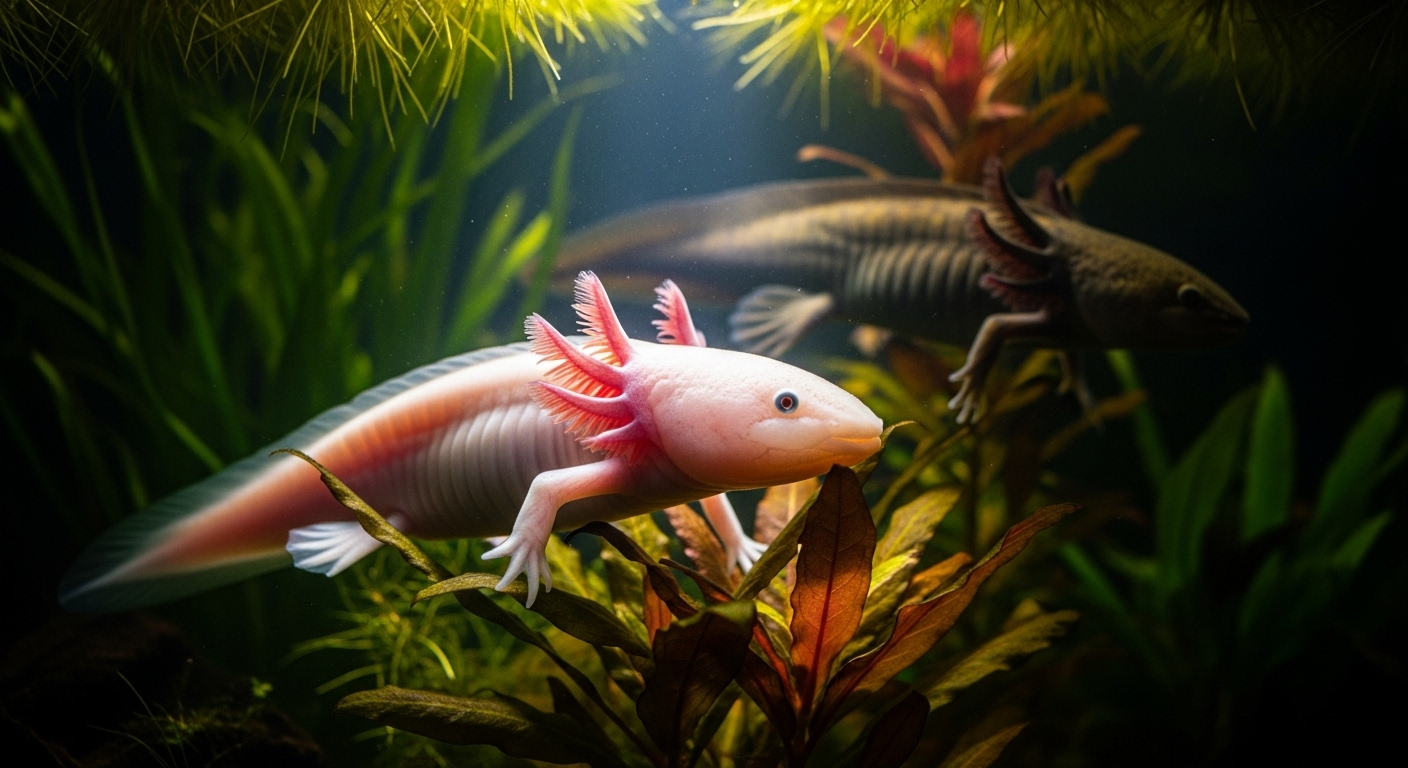Decoding the Enigmatic World of Axolotl Color Morphs
The captivating realm of axolotls, those charming salamanders with perpetual smiles, has long fascinated animal enthusiasts and scientists alike. While their unique ability to regenerate body parts has been widely studied, a lesser-known aspect of these aquatic wonders is their stunning array of color variations. This article delves into the mesmerizing world of axolotl color morphs, exploring the genetic intricacies, breeding challenges, and conservation implications of these remarkable creatures.

The Genetic Ballet: Understanding Axolotl Color Inheritance
At the heart of axolotl color diversity lies a intricate genetic dance. Unlike many animals with straightforward color inheritance, axolotls boast a complex system involving multiple genes. The primary players in this genetic ballet are the melanophore genes, which control the production and distribution of dark pigments, and the iridophore genes, responsible for the shimmering, reflective qualities of their skin.
The wild-type axolotl, with its mottled brown and olive coloration, serves as the genetic baseline. From this foundation, various mutations and gene combinations give rise to the plethora of colors we see in captive populations. Understanding these genetic mechanisms is crucial for breeders and conservationists alike, as it allows for more precise and ethical breeding practices.
The Rainbow Spectrum: Exploring Popular Axolotl Morphs
The axolotl color palette is a testament to nature’s artistry, with each morph showcasing unique characteristics. The leucistic axolotl, with its pristine white body and captivating pink gills, is perhaps the most recognizable variant. This morph results from a reduction in pigment-producing cells, creating an almost ethereal appearance.
Golden albinos, characterized by their pale yellow hue and pink eyes, lack melanin production entirely. The striking black melanoid morph, on the other hand, is the result of an overproduction of melanin, resulting in a deep, velvety appearance. Copper, champagne, and lavender axolotls round out the spectrum, each with its own genetic quirks and visual appeal.
Breeding for Beauty: The Art and Science of Axolotl Color Selection
The pursuit of new and exotic axolotl colors has given rise to a passionate community of breeders. However, this endeavor is not without its challenges and ethical considerations. Selective breeding for specific traits can sometimes lead to health issues or reduced genetic diversity, a concern that responsible breeders must always keep in mind.
The process of breeding for color involves careful selection of parent axolotls, understanding of genetic probabilities, and often, a good deal of patience. Some color combinations are more challenging to achieve than others, and unexpected results can occur due to recessive genes. Breeders must balance the desire for unique colors with the overall health and well-being of the axolotls.
Conservation Conundrum: Wild Populations vs. Captive Color Diversity
While the explosion of color morphs in captive axolotls has been a boon for enthusiasts, it presents a unique challenge for conservation efforts. Wild axolotl populations in Mexico are critically endangered, with estimates suggesting fewer than 1,000 individuals remain in their natural habitat. The focus on breeding colorful morphs in captivity has led to a genetic divergence between captive and wild populations.
Conservationists face the dilemma of maintaining the genetic integrity of wild axolotls while also preserving the diversity found in captive populations. Some argue that the captive color morphs represent a valuable genetic resource that could potentially be reintroduced to bolster wild populations. Others caution against introducing non-native genetics into the already fragile wild ecosystem.
The Future of Axolotl Colors: Balancing Beauty and Biodiversity
As we look to the future, the world of axolotl color morphs continues to evolve. New variations are still being discovered and developed, pushing the boundaries of what we thought possible in axolotl coloration. However, this progress comes with a responsibility to maintain the health and genetic diversity of these remarkable creatures.
Advancements in genetic research may soon allow for more precise breeding techniques, potentially reducing the risk of health issues associated with certain color morphs. Additionally, collaborations between breeders, researchers, and conservationists could lead to innovative solutions for preserving both captive diversity and wild populations.
The axolotl’s journey from a little-known Mexican salamander to a global phenomenon showcases the power of nature’s palette. As we continue to unlock the secrets of their colorful world, we’re reminded of the delicate balance between human fascination and the preservation of natural wonders. The future of axolotl color morphs lies not just in their visual appeal, but in our ability to appreciate and protect the full spectrum of their genetic heritage.





